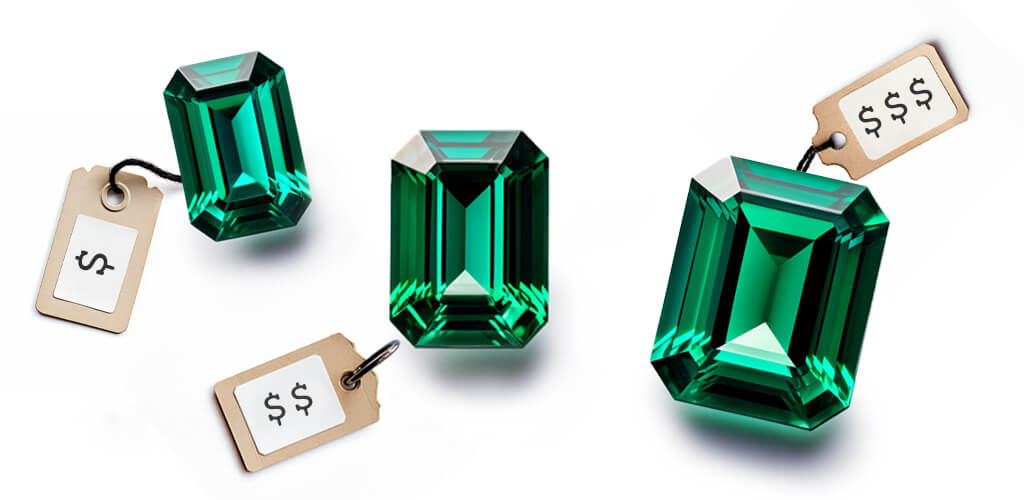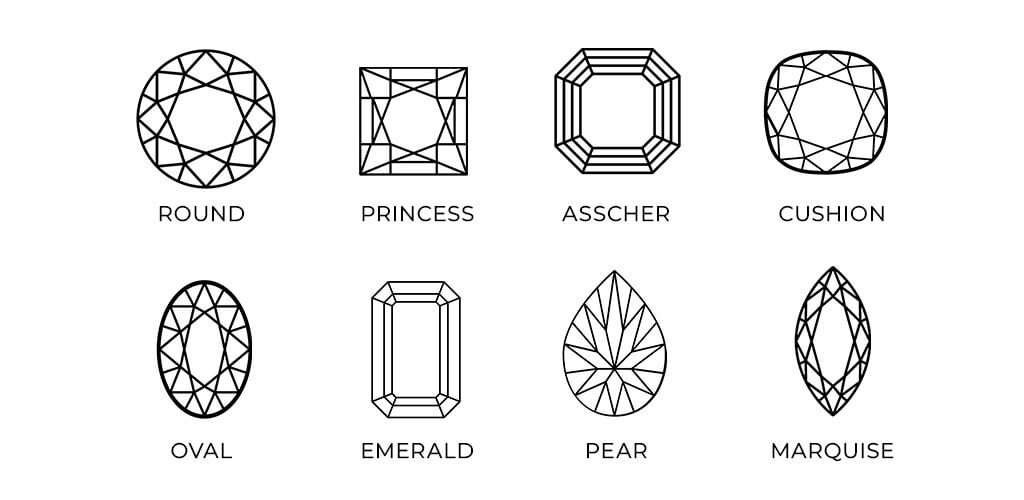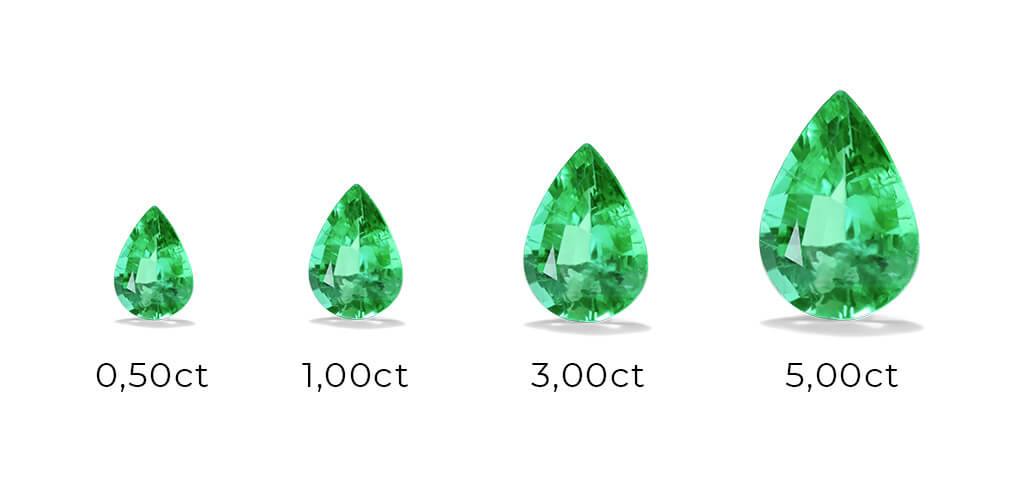
We are green with emerald envy! Let’s discuss everything you need to know about this alluring gemstone and May’s main birthstone.
An emerald gemstone is characterized by its grass-green color and long history as a highly sought-after stone. While emeralds are known for their signature green hue, that hue can vary from stone to stone. Some stones are rich and velvety, while others may be lighter with hints of blue.
With so many subtleties between stones, you can be sure that each gem is truly one of a kind.
Emerald is the birthstone for May, making it the ideal gift for someone celebrating a birthday in the springtime, evoking imagery of nature, renewal, and vitality.
As with most stones (and especially diamonds), the cost of an emerald will entirely depend on its quality.
An emerald’s cut, clarity, and color will significantly impact its price tag. Cleaner, brighter, and greener emeralds will always be more expensive.
That being said, the cost of an emerald can range anywhere from $200 to $900, depending on such factors.
Because of its grading system (and emphasis on color), a highly-rated emerald is sometimes harder to find than a highly-rated diamond. Sometimes, a small but pure emerald is more expensive than a large but slightly lesser-rated diamond.
Keep this in mind when shopping for an emerald, and don’t be shocked when the price tag compares to that of a diamond!
Similar to diamonds, emeralds are graded by the 4 Cs:
Keep these in mind when comparing the prices of different emeralds!
Color
When it comes to color, darker doesn’t always mean more expensive. Instead, it’s the richness of the green that influences the cost. Emeralds can come in a number of hues (some have more blue, some have more green), but the potency of that color is how the stone is graded.

Cut
Interestingly, emeralds (unlike diamonds) almost always have inclusions, or small marks, inside the stone. These inclusions can be incorporated into the design and shape of the stone with a delicate and high-quality cut.

Clarity
Prices will vary depending on how these inclusions are displayed within the stone, aka, their clarity. Sometimes, these marks appear as bubbles, lines, crystals, or stripes. The more visible the inclusions and the darker their color, the lower the clarity grade of the emerald will be.

Carat
Emeralds can be cut into all shapes and sizes. As far as rules go, the higher the carat weight of a stone, the more expensive it becomes.

Did you know that emeralds can actually be found around the globe? From North America to Australia, from Pakistan to Brazil. Despite this apparent abundance, not all of these stones are made equal.
While most of the world’s emeralds come from Colombia, Brazil, or Zambia, Colombian emeralds come with the highest price tag.
Colombia is home to major mines, such as Muzo and Chivor, that produce almost 90% of the world’s emerald supply. It is said that the mineral deposits in these mines produce clearer and richer stones, making for a more expensive product.
Most emeralds have visible inclusions, so it’s rare to find one that hasn’t undergone some sort of artificial treatment.
Treatment processes often include cedar oil baths that fill in gaps and cavities within the stone itself.
Due to this common practice, an emerald without heavy inclusions that has not been treated will be listed at a higher price.
But treatments of emeralds don’t just occur before purchasing; they can also take place afterward.
When it comes to emerald birthstone jewelry, there are truly no limits! Emerald gemstones make a beautiful addition to a number of pieces, including:
Emerald studs, combined diamond bracelets, pendant necklaces, and even emerald engagement rings.
Each item beautifully features this birthstone, with either one focal stone or many.

These stones can be sensitive to sudden temperature changes. Avoid exposing them to extreme heat or cold. If you’re doing some house cleaning, remove your emerald jewelry so it isn’t exposed to any chemicals. Keep emerald jewelry away from harsh chemicals, such as household cleaning agents, perfumes, and hairspray, as they can damage the stone’s surface.
Periodically check your emerald jewelry for loose stones or any signs of damage to catch any issues early.
Consider having your emerald jewelry professionally cleaned and inspected by a jeweler every 6-12 months to ensure its longevity and address any potential issues. Remember, emeralds are precious gemstones; proper care will help maintain their beauty and value over time. If in doubt, consult with a professional jeweler for personalized advice on caring for your specific emerald jewelry.
When it comes to emerald shopping, it’s important to know what you’re looking for! From the 4Cs, to the origin, to treatment, we recommend keeping this information in your back pocket when you’re out browsing.
Emeralds are a beautiful stone with a rich history and an even richer presence- we hope you will find one that is just right for you!
Beryl is a naturally occurring mineral consisting of a silicate of beryllium and aluminum that appears pale green, blue, or yellow. Known varieties of beryl are emerald and aquamarine.
Green beryls are not to be confused with true emeralds. While these two stones may share similarities, green beryls do not contain the trace elements that emeralds do.
Green beryls are usually light green, while emeralds tend to be more vivid and dark.
Yes! Different origin locations tend to procure different colored emeralds. For example, the Muzo mine in Colombia is known for its brilliant shades of green. Alternatively, emeralds from Brazil tend to have hints of yellow in them.
90% of the world’s emerald supply comes from several mines in Colombia!